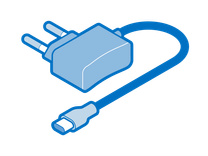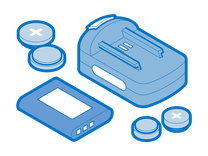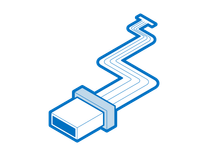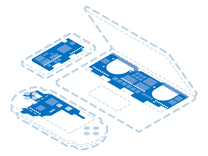The Basics
These first few steps may seem trivial; however, it is easy to forget the troubleshooting basics during times of frustration. Before you start any significant repairs to your device, please check the following:
- Check your charging source. Ensure the power source (wall outlet or power strip) works correctly. Connect another device or swap to another outlet to verify,
- Restart your laptop. It's Troubleshooting 101 for good reason. Restarting your laptop correctly (rather than by crash or hard shutdown) finalizes any pending repairs and restarts all systems services. Use the restart option in the Start Menu.
- Remove all peripherals. This applies to anything attached to your laptop—flash drives, USB hubs, display cables, dongles, literally anything other than the charger.
Causes
A faulty power supply or adapter can prevent your laptop from receiving the electricity necessary to turn on.
- Inspect the power cable and connector for any visible damage, fraying, or loose connections. If you have a charger with a barrel connector, verify the pin inside the barrel isn't bent or damaged.
- Try a new or known-good charger. Alternatively, use your charger with another compatible Dell laptop. Does a different charger work? It's time for a new one. If yours works with another laptop, tough luck, but it won't be that easy.
- Many Dell laptops will charge via USB-C and their dedicated DC jack. Even a low-wattage charger could provoke different behavior. If this works, a new charger is in order.
- Not all USB-C ports will support charging; Some Dell laptops restrict one USB-C or Thunderbolt port to function as the designated charging port, often marked by an icon (e.g., ⚡ or a power plug logo).
- If a USB-C charger works but the original charger does not, this could indicate a faulty port rather than the charger.

Find compatible replacement parts for your Dell Laptop. All parts and fix kits are backed by the iFixit Quality Guarantee.
Sometimes, your device's operating system. In other instances, outdated or corrupt software or drivers can interfere with charging. Here are some things that you should consider checking.
- Check your device's power settings. Be sure that nothing is affecting your device's charging.
- Check for software updates. If your software is outdated, you might need to update it to resolve this issue. Be sure to install any pending updates for your operating system.
- Uninstall and reinstall the battery drivers through Device Manager. Reinstalling your driver's software should resolve issues affecting your device's charging.
- Perform a hard reset on your laptop. This involves turning it off, disconnecting the charger, and holding the power button for 15-20 seconds.
Batteries are nefarious. They often fail due to their "consumable" nature. Although they typically die slowly and with diminishing power on time, a bunk battery might refuse to be recognized or charged.
- Disconnect the battery and try to power it on. Most Dell laptops will boot without it. If it powers up, the battery is likely your issue.
- Check for visual signs of battery age, swelling, or leak. Swollen batteries may manifest as difficulty in using the trackpad or the keyboard. As the battery expands, it exerts upward pressure on the underside of these components.
- Reset your device's battery. This usually involves pressing and holding a combination of keys; refer to your laptop's user manual for instructions.
- Replace your battery if the above suggestions don't work, especially if you've used your laptop for many years. Battery degradation is inevitable. You can check your battery's health. However, this will vary depending on your operating system. Some Dell laptop models make it easier than others, and iFixit makes it easy to source a replacement battery.
NOTE: Depending on the age and operating system running the laptop and the time you are replacing the battery, Dell designs their BIOS is detect and block 3rd party batteries, notably affecting newer models and poor clones of the OEM battery until good clones which trick the BIOS are readily available. If the system detects a 3rd party battery and the laptop shuts charging down, the resolutions will vary somewhat. Some laptops can be disconnected and reconnected if it occrus while others require you to remove and reinstall the ACPI Windows driver if it is also blocked in Windows due to a BIOS level block.

Find compatible replacement parts for your Dell Laptop. All parts and fix kits are backed by the iFixit Quality Guarantee.
Dell uses two main types of power input connectors—the old-fashioned barrel connector and USB-C. In both cases, it's a common failure point and the conduit for power to enter the system.
- Perform a thorough visual inspection of the port. Use a flashlight for USB C-port interiors. It's an easy entry point for liquids, and corrosion can live here undetected.
- Wiggle the cable gently to see if you can get a better connection. If the port is loose, there may not be enough contact to transfer energy. Or they may have no contact at all. This usually calls for a replacement port.
- Check for signs of corrosion or burn. If anything looks questionable, open the machine and pull out the affiliated part for a better look. USB-C ports, in particular, will benefit from this sort of inspection.
- Spills commonly damage USB-C ports. Even if the liquid doesn't penetrate the machine's interior, corrosion in the port can spell trouble.
- Barrel connectors are likelier to suffer from bent pints or broken plastic parts. If your port feels loose, it's likely this is to blame.
- If you determine this is your issue, replace the DC jack. In many cases, it is a modular component. If it's mounted to the motherboard—like a USB-C port—you'll need some soldering chops to proceed (or replace the whole board).

Find compatible replacement parts for your Dell Laptop. All parts and fix kits are backed by the iFixit Quality Guarantee.
If all the above tips have failed, there is likely an issue with your laptop's motherboard. Damage to the charging circuitry can also occur as a secondary issue to a faulty battery, charger, or USB-C charge port.
- Inspect the laptop's motherboard for any signs of physical damage, such as burnt components, liquid residue, corrosion, or other visible issues.
- If your motherboard's components aren't functioning properly, you will likely need to source a replacement board.
- Circuit boards can often be repaired by a knowledgeable technician with soldering (or microsoldering) experience. Ask your local repair shops if this isn't something you think you could do yourself.

Find compatible replacement parts for your Dell Laptop. All parts and fix kits are backed by the iFixit Quality Guarantee.








